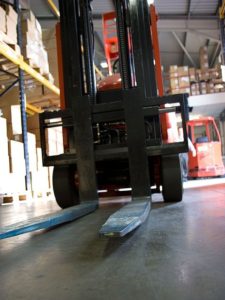
A November 2013 survey found that distribution center managers found that their warehouses aren’t entirely optimal, but they lack the time, resources and strategies to greatly improve operations.
Specifically, the survey found that mid-sized warehouses (approximately 50 workers) lose almost 3,000 hours a year due to workforce inefficiencies.
Additionally, while 89 percent of those surveyed indicated that new technology could help managers recoup these inefficiencies, only 70 percent had conducted a thorough review of practices in the warehouse in the past year.
In this post, we’ll identify four strategies to help evaluate your warehouse operations and eliminate redundant, ineffective processes.
1) Maintain a Thorough Process Log of Any and All Changes
While it’s common to keep track of inventory error rates, many warehouse managers fail to take advantage of the insight within these metrics. While they certainly do point to problems, error rates are best utilized when seen as indicators of systematic failures within your organization.
The best way to pinpoint these failure points is to meticulously log any changes in standard operations procedures (SOP), warehouse management systems, personnel, or other changes within your warehouse. The ability to put these changes on a time scale is the difference from the ability to be proactive opposed to reactive when analyzing error rates related to fill rates, pick location errors, inventory errors, etc.
2) Emphasize Processes that Reinforce Accountability
When creating a SOP or process in your warehouse, the benefits realized in these methods are lost when workers circumvent the system or create workarounds. All too often, a mistake made at the start of the picking process isn’t a big concern for the perpetrator-they know that someone down the line, likely a packer, will fix the problem for them.
Create a workflow within your organization that creates accountability, but also puts an emphasis on the importance of accuracy. For example, create an area for packers to place errant inventory, and ask them to notify pickers of the mistake rather than fixing it themselves. The near-term losses in efficiency will be regained in the long-term with workers that are more attentive to the little things.
3) Offer Continuous Process Improvement & relevant educational Courses for your Workers
It’s important to invest in technology, processes and equipment that empowers your staff to do their jobs effectively. It’s just as important to invest in their development. By doing so, you are able to create a “lean” culture and workforce that can work together to continually improve the operation.
4) Have Leadership on the Floor
Regardless of the amount of effort you put into streamlining the warehouse, redundancies and unnecessary activities will arise over time. It’s just the nature of the beast. And the repetitive nature of many warehouse responsibilities makes these habits not only hard to solve, but hard to discover until it becomes a big problem.
One method to help identify these tendencies quickly is to have an outsider look-in-namely, a member of your company’s leadership can help just by walking the warehouse floor, or going to the various associates and having a brief conversation with them about conditions, challenges, and opportunities they have identified to become more efficient, accurate and successful within their core functions. When doing so, ask your leaders to question “why” things are being done, more so than “how.” Having eyes that aren’t entrenched in the day-to-day is a helpful way to root-out strange practices and optimize your supply chain.

